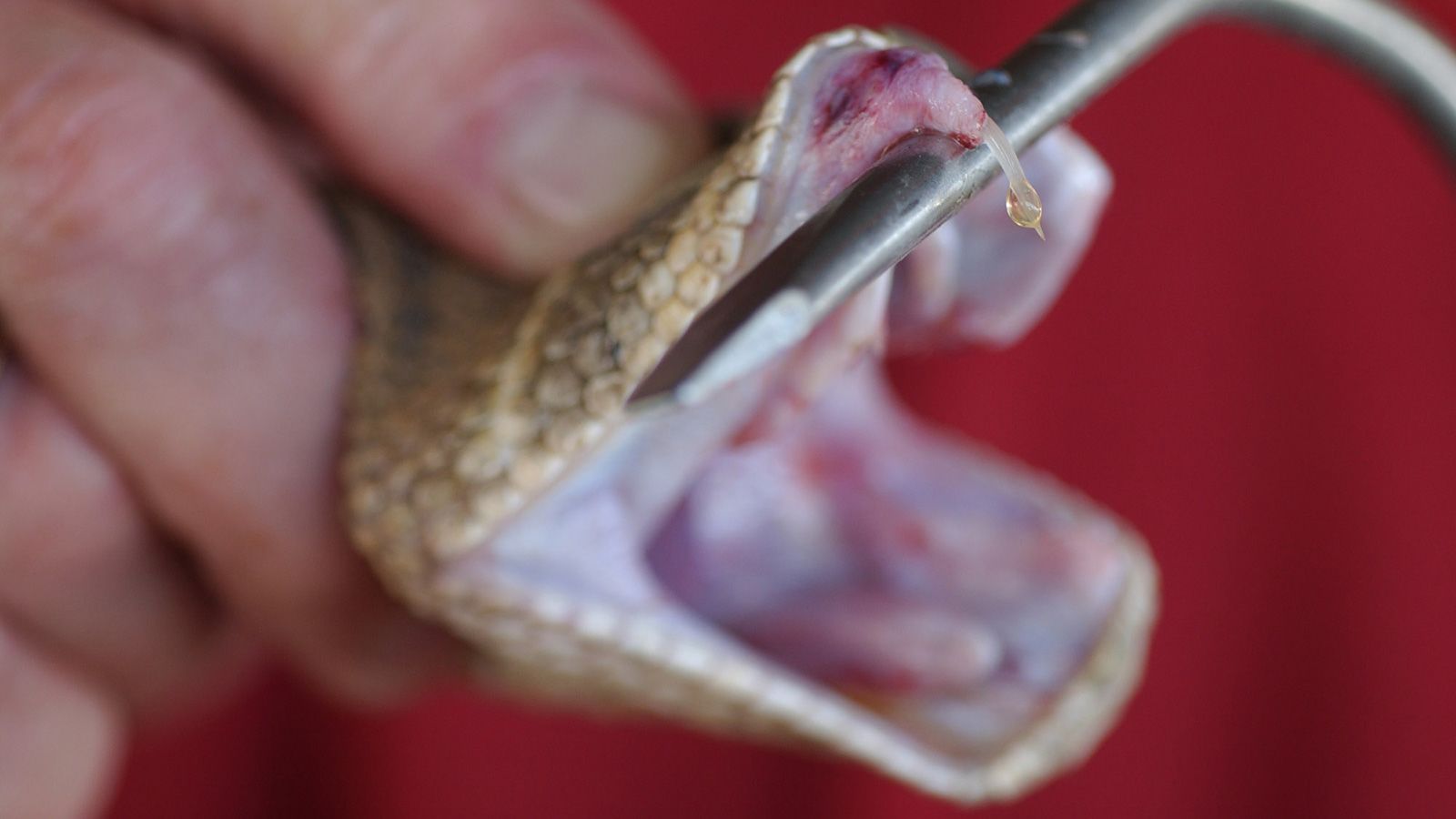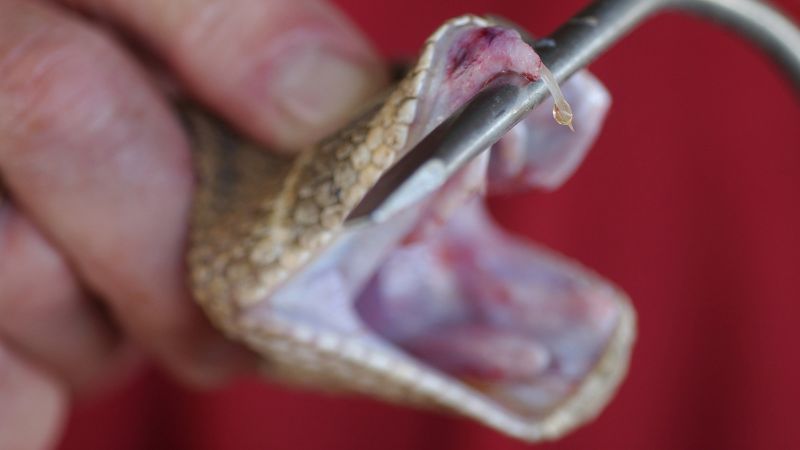Rattlesnakes are one of the deadliest venomous snakes in North America, and a bite from one can lead to serious health complications. Knowing what to do in the event of a rattlesnake bite can be the difference between life and death. In this article, we will discuss the steps you should take immediately after a rattlesnake bite to ensure the best possible outcome.
Whether you’re an avid hiker or live in an area where rattlesnakes are common, it’s important to be prepared for the worst-case scenario. From identifying the symptoms of a rattlesnake bite to administering first aid, we’ll cover everything you need to know to stay safe in the event of a venomous snake bite. So, let’s dive in and learn what to do with a rattlesnake bite.
If you are bitten by a rattlesnake, seek medical attention immediately. While waiting for medical assistance, try to stay calm and keep the affected body part still and below heart level. Do not attempt to suck out the venom, as this can cause more harm than good. Applying a cold compress can help alleviate pain and swelling. Remember, the best course of action is to seek professional medical treatment as soon as possible.

What to Do With a Rattlesnake Bite?
Rattlesnakes are venomous snakes that can be found in many parts of the world. Their bites can be dangerous and potentially life-threatening, depending on the severity of the bite and the location of the bite. If you or someone you know has been bitten by a rattlesnake, it’s important to take immediate action to minimize the effects of the venom and get medical attention as soon as possible.
Recognize the Symptoms of a Rattlesnake Bite
The symptoms of a rattlesnake bite can vary depending on the severity of the bite, the location of the bite, and the individual’s reaction to the venom. However, some common symptoms of a rattlesnake bite may include:
– Pain or swelling at the site of the bite
– Redness or discoloration around the bite
– Nausea or vomiting
– Dizziness or fainting
– Rapid heartbeat or breathing
– Tingling or numbness in the affected area
If you or someone you know experiences any of these symptoms after a rattlesnake bite, it’s important to seek medical attention immediately.
Take Immediate Action
If you or someone you know has been bitten by a rattlesnake, it’s important to take immediate action to minimize the effects of the venom. Here are some steps you can take:
1. Stay calm and still: Moving around can spread the venom more quickly through the body. Try to stay as calm and still as possible.
2. Remove any tight clothing or jewelry: This can help prevent the venom from spreading further.
3. Clean the bite wound: Use soap and water to clean the wound, but don’t try to suck out the venom or use a tourniquet.
4. Keep the affected limb elevated: This can help slow the spread of the venom.
5. Seek medical attention: Call 911 or go to the nearest emergency room as soon as possible.
Get Medical Treatment
Medical treatment for a rattlesnake bite may include:
1. Anti-venom: This is the most effective treatment for rattlesnake bites. Anti-venom is a medication that neutralizes the venom in the body and can prevent serious complications.
2. Pain medication: Over-the-counter pain medication or prescription pain medication may be given to help manage pain and discomfort.
3. Wound care: The wound may need to be cleaned and dressed regularly to prevent infection.
4. Monitoring: The individual may need to be monitored in the hospital for signs of complications, such as difficulty breathing or kidney failure.
Prevent Rattlesnake Bites
Preventing rattlesnake bites is the best way to avoid the potential danger they pose. Here are some tips to help prevent rattlesnake bites:
1. Wear protective clothing: When hiking or spending time outdoors in areas where rattlesnakes are common, wear long pants and boots.
2. Watch where you step: Rattlesnakes often hide in tall grass or under rocks, so be cautious when walking in these areas.
3. Be aware of your surroundings: Keep an eye out for rattlesnakes and listen for their distinctive rattle.
4. Keep pets on a leash: Dogs are often curious about snakes and can accidentally provoke a bite.
5. Don’t handle snakes: Even non-venomous snakes can bite and cause injury.
The Benefits of Knowing What to Do With a Rattlesnake Bite
Knowing what to do in the event of a rattlesnake bite can mean the difference between life and death. By taking immediate action and seeking medical attention as soon as possible, you can minimize the effects of the venom and reduce the risk of serious complications. Additionally, understanding how to prevent rattlesnake bites can help you avoid dangerous situations altogether.
Rattlesnake Bite Vs. Other Snake Bites
While rattlesnake bites are among the most dangerous types of snake bites, they are not the only ones. Other venomous snakes include copperheads, cottonmouths, and coral snakes. Each type of snake bite can have different symptoms and require different treatments, so it’s important to seek medical attention as soon as possible if you are bitten by any type of snake.
Conclusion
Rattlesnake bites can be dangerous and potentially life-threatening, but with knowledge of what to do in the event of a bite, you can minimize the effects of the venom and reduce the risk of serious complications. Remember to stay calm, take immediate action, and seek medical attention as soon as possible. By following these steps, you can protect yourself and others from the dangers of rattlesnake bites.
Frequently Asked Questions
Encountering a rattlesnake can be scary, and getting bitten by one can be even scarier. If you or someone you know has been bitten by a rattlesnake, it’s important to know what to do next.
What are the symptoms of a rattlesnake bite?
After a rattlesnake bite, you may experience symptoms such as pain, swelling, and redness around the bite area. You may also experience nausea, vomiting, and difficulty breathing. In severe cases, a rattlesnake bite can lead to paralysis or even death.
If you notice any of these symptoms after being bitten by a rattlesnake, seek medical attention immediately.
What should I do if I get bitten by a rattlesnake?
If you get bitten by a rattlesnake, the first thing you should do is try to stay calm. Move away from the snake and call for help. Keep the affected limb immobilized and below heart level if possible. If you have a compression bandage, apply it firmly above the bite site to slow the spread of venom. However, do not cut the wound or attempt to suck out the venom.
Seek medical attention as soon as possible. Treatment for a rattlesnake bite may involve antivenom medication or other medical interventions.
How is a rattlesnake bite treated?
When you arrive at the hospital, the healthcare provider will assess the severity of the bite and provide appropriate treatment. This may include administering antivenom medication, pain relief, and monitoring for any complications.
It’s important to follow the healthcare provider’s instructions carefully and continue any follow-up care as needed. Full recovery from a rattlesnake bite can take several weeks or even months.
How can I prevent getting bitten by a rattlesnake?
To prevent getting bitten by a rattlesnake, be aware of your surroundings when hiking or spending time outdoors. Wear protective clothing and shoes, and avoid walking in areas where snakes may be hiding, such as tall grass or rocky areas.
If you encounter a rattlesnake, give it plenty of space and do not attempt to handle or provoke it. Rattlesnakes usually only bite when they feel threatened or provoked.
What should I do if I encounter a rattlesnake?
If you encounter a rattlesnake, stay calm and give it plenty of space. Do not attempt to handle or provoke the snake. Slowly back away from the snake and leave the area. If the snake is in a public area, alert the local authorities so they can safely remove the snake.
Remember, rattlesnakes are an important part of the ecosystem and should be respected from a safe distance.
When Snakes Bite: Pre-Hospital Care
In conclusion, if you are bitten by a rattlesnake, it is important to stay calm and seek medical attention immediately. Rattlesnake bites can be extremely dangerous and can cause serious health complications if left untreated.
It is also important to avoid trying to suck out the venom or use any kind of tourniquet, as these methods are not effective and can even make the situation worse.
By following these guidelines and seeking prompt medical attention, you can increase your chances of a full recovery and avoid any long-term health complications. Remember to stay safe and be cautious when hiking or spending time in areas where rattlesnakes are known to inhabit.


